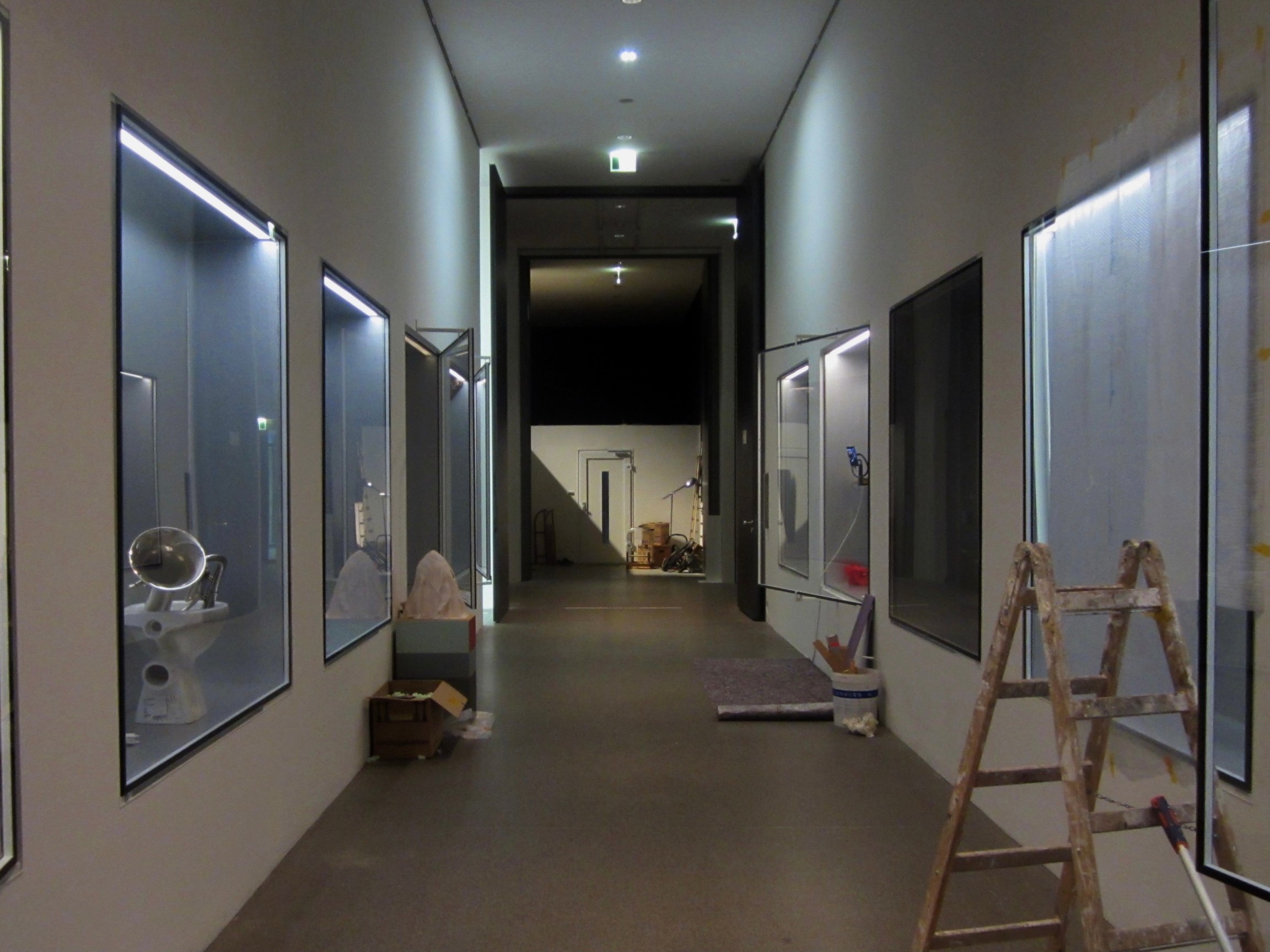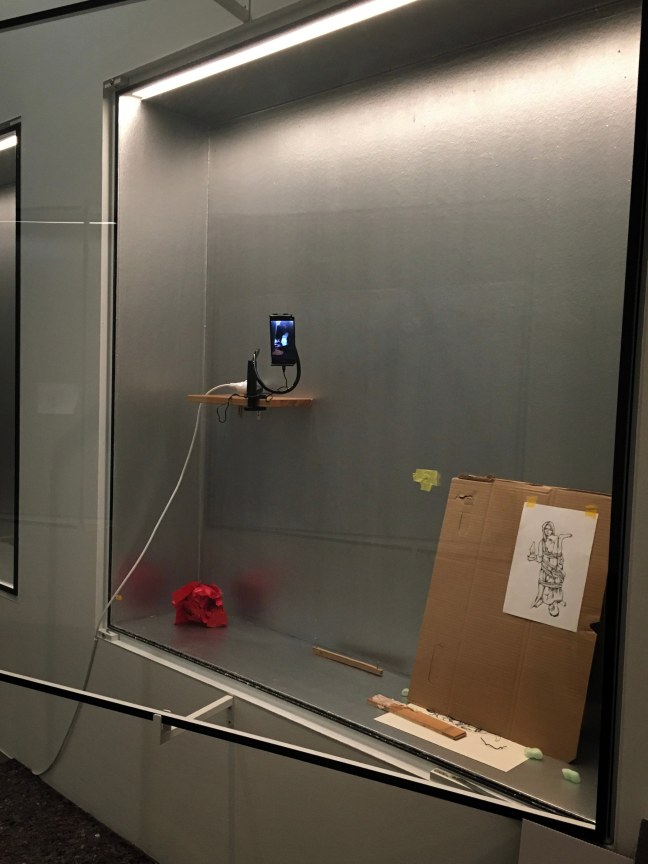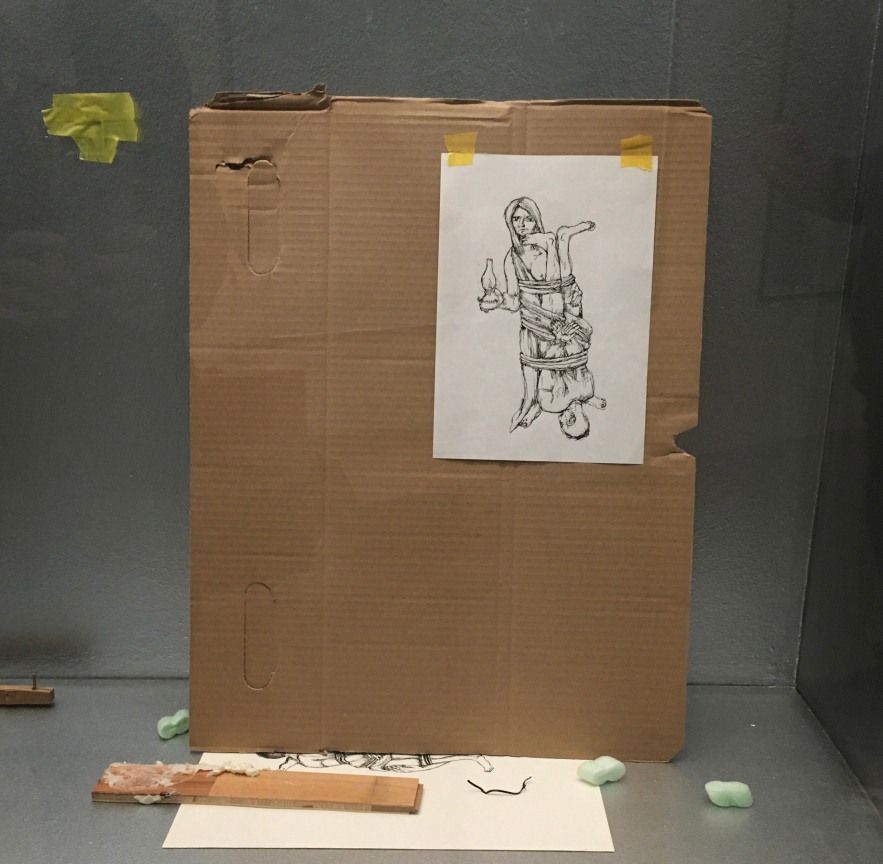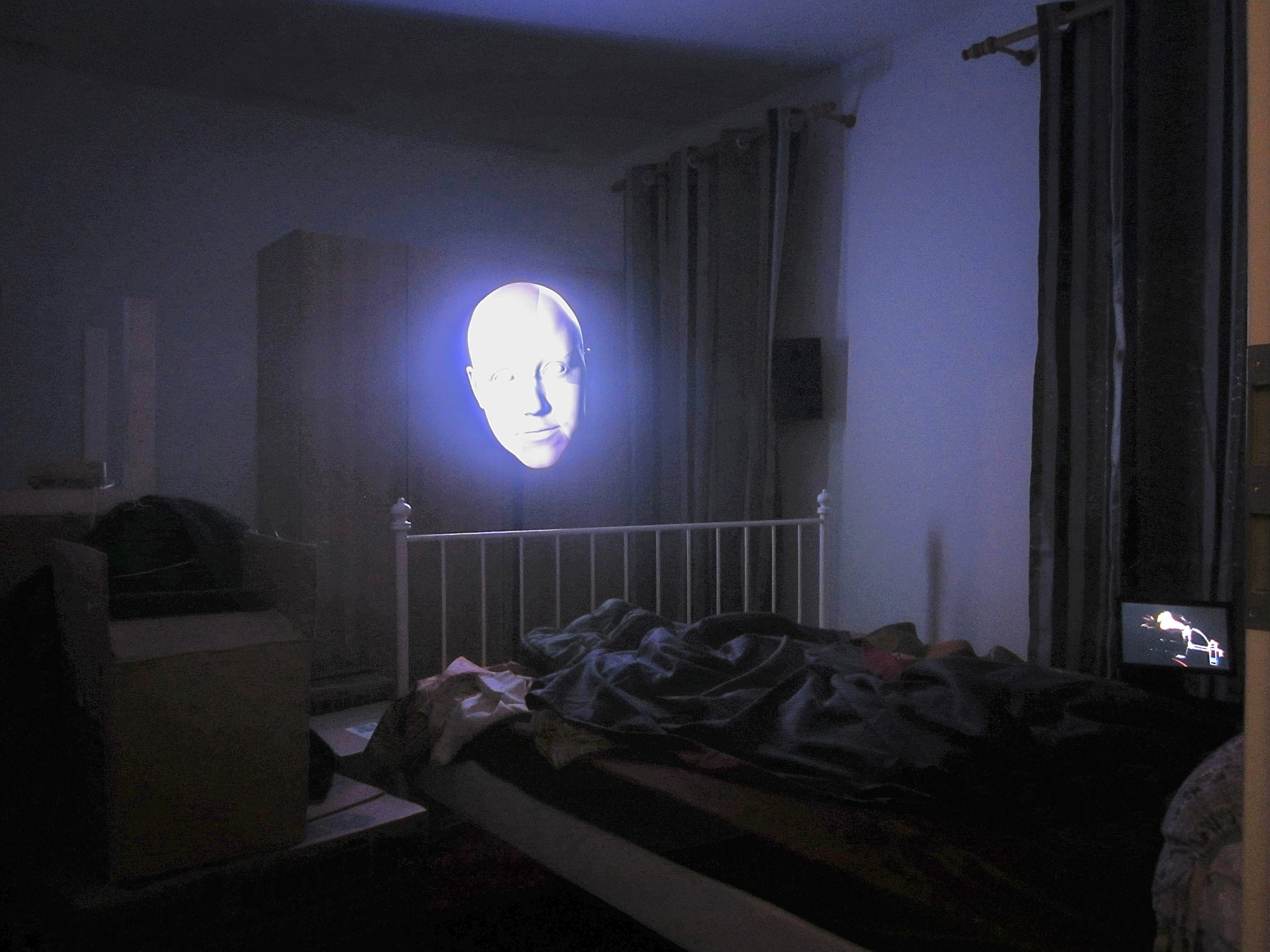For the first time, a single drawing is at the aesthetic crosslines of one of the sets of the internationally renowned filmmaker Omer Fast. Max Beckmann presents himself in his 1917 double-sided self-portrait as a convalescent war veteran. In 1915, after suffering a nervous breakdown, Beckmann was released from active military service as a medic. Two years later, it appears as though the visions of witnessed war crimes were haunting his mind and causing harm to his body as well. The visions make it hard for him to escape from his shattered world and return to an orderly and emotionally stable civilian life. Omer Fast’s installation investigates this obviously precarious state between reality and madness in Beckmann’s portrait and carries it over to our own lives and visual experience.
Upon entering the corridor flanked by vitrines, formerly a parade ground for graphic art, appears deserted. The display cases solely hold relics from our daily life that look as if arranged by invisible hands and as if they had developed a life of their own. In a spot, where work seems to have just been dropped, a deserted mobile phone plays an obsessive private collection of images. It is uncertain if this display of digital data is a violation of privacy or the disclosure of a crime. Either way, this flood of images reminds us of our own addiction to images from beyond the analog world. In a second vitrine, a nearby sketch of a tied couple helps us decipher a film on a mobile phone as a re-enactment of the right panel of Beckmann’s menacing triptych Abfahrt (Departure, 1932–35). This motif reflects the drama of flight from a catastrophic world into a promising future as Beckmann himself had experienced it and as hundred-thousands of people are experiencing it today. With this is mind, the exhibition’s title oscillates between bright hope and dark prophecy.
The adjoining apartment seems neither deserted nor inhabited. We cannot be certain if it is undergoing renovation or was departed for good and left to rot. In the living room the TV set shows the fabled story of a ghost that determines people’s fates. In the adjoining master and children’s bedrooms – formerly havens of safety – professional content managers and super recognizers talk about their work that is meant to protect our lives from the abysses of human imagination but that has thrown them off track in their own lives.
Upon leaving the apartment for the backyard, we are enveloped there by a cloud of countless Beckmann portraits. It is a mystery who created them. Apparently, past mental images are haunting this place like revenants. In the video room next door, which looks like the film still of a summer fete, another film tells a story that vacillates between dream and reality.
Omer Fast’s work Abfahrt is an offer to visitors to experience motifs of Max Beckmann’s life and art in a different manner and to check, in one spot or another, the faded matrix of the past against our own lives and experiences. At the end of the tour, we may ask ourselves if we still see Beckmann’s Self-portrait seated, hands folded as we did before.

![Max Beckmann, Self-portrait seated, hands folded [recto], 1917, Pen in black ink, 317 x 239 mm, © VG Bild-Kunst, Bonn 2020](https://img.artlogic.net/w_1600,h_864,c_limit/exhibit-e/599f12405a4091c6048b4568/54ebcb0e1275d00f2b00a1ad3311cb05.png)



